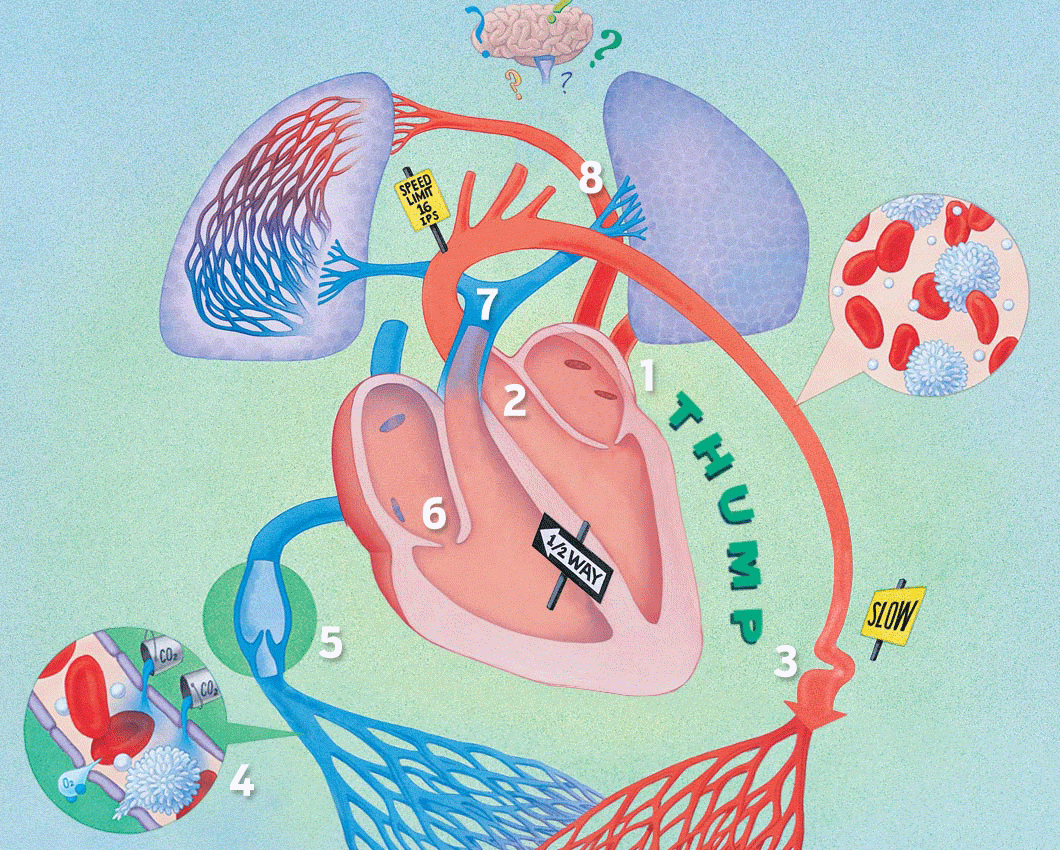Have students try these activities to expand their knowledge and interest about the Heart.
Math, Science
The first paragraph in the Topic, The Heart’s Purpose and Function, states “As you read this, your heart is pumping about five quarts of blood throughout your body.” Use this information to introduce the liquid measurements of gallon, quart, pint, and cup. Bring in a variety of cleaned containers that hold these amounts, such as milk and orange juice jugs and cartons, and a liquid measuring cup. Measure out five quarts of water and pour it in a bucket to show students approximately how much blood is in their bodies. Next, ask students to look at the containers and estimate how many cups are in a pint, how many pints are in a quart, and so on. Then students can pour water in the containers to find out the exact measurements. (2 cups = 1 pint; 2 pints = 1 quart; 4 quarts = 1 gallon) Finally, have students create math problems using these numbers: How many pints are in one gallon? How many pints are in five quarts? How many cups are in one quart?
Science, Language Arts
Invite the school nurse or a local nurse or doctor to visit your class. Before the visit, ask students to come up with several appropriate questions about the nurse’s or doctor’s profession of medicine (not his or her personal life). You or other students can review the questions ahead of time to make sure they are worded well and have potentially interesting answers. Questions may include: “How long have you been practicing medicine?” “Why did you decide to become a doctor or nurse?” “What is the most successful service you have ever performed?” or “Do you think our health care system needs to be reformed? If so, what three things would you suggest need to be done?”
Physical Education, Math
Work together with the physical education teacher to teach students where to find and how to take their heart rates. Have students take their heart rate before and after gym class, in addition to a few times during the class, such as just after they have run some sprints. Each student can put the information into a line graph with the time of day he or she took the heart rate along the bottom (X-axis) and the number of beats per minute along the side (Yaxis). Then students can explain at which points they had just run sprints (probably the peak heart rate), when they were resting, and so on.
Language Arts
Have each student write a short essay telling which patient should be first in line to get a heart transplant—the sickest, the youngest, the most famous, the one most likely to survive the operation, the first to sign up? Students should state their opinion and then support it with several reasons. Have students read their papers aloud. A discussion might follow in which students discuss whether or not any idea presented in any paper helped them see the situation in a new light.

